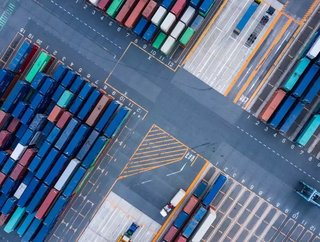Gartner Top Tips: The Journey to Supply Chain Resilience

As a result of decades of globalisation, it is clear that the tide is turning. Trade disruptions and the COVID-19 pandemic has caused economies to dial back on global integration and focus on themselves and their neighbours.
Supply chain leaders are seeking ways they may have to follow suit. Many manufacturers are trying to reduce their reliance on China as the fragility of their supply chain networks are exposed, whether that’s due to tariffs, factory lockdowns or logistics disruptions. However, the retooling of global networks has to be pursued carefully, without severing vital relationships.
“Decoupling the U.S and Chinese economies is not the same as diversifying for resilience,” says Kamala Raman, Senior Director Analyst, Gartner. “The first is seen as a binary ‘all or nothing’ act, which can be expensive or impossible to execute given the depth of integration between these economies. Improving resilience, on the other hand, is an excellent idea.”
- Risk appetite
Risk appetites are unique to every company, and they measure the level of risk a company can absorb. Risk appetite varies depending on market position and profitability, the product or service offering, competitive situations, the supplier ecosystem and regulatory imperatives.
2. Critical partners
While a large, global organisation might have the resources to invest in a diversified network, its critical suppliers might not. Supply chain leaders should look beyond their own capabilities, and evaluate if their partners are weakened by the current conditions and unable to support a diversification strategy. If this is the case, it is worthwhile to consider supportive actions or seek more capable partners.
3. What are we protecting?
“When making a decision, it’s important to work out exactly what you’re trying to protect - a product line, government contract or market access,” comments Raman. “And then consider what you’re trying to protect against: sole-sourcing risks, increasing labour costs, tariffs, lead times or regulatory burdens. The answers to those questions will provide an insight into how much resilience and diversification your network really needs.”
4. Trade-off decisions
It’s less expensive and time-consuming to establish resilience right at the decision point for a new product or a new network setup. Diversifying an already existing network is more difficult to execute and requires substantial resources. It could be a better decision to maintain the status quo for existing product lines and pursue diversification for upcoming product introductions. If an organisation is on the verge of a technological shift, such as one to 5G, the opportunity cost of missing out on the upside could be too great and it’s better to view the reduction of global dependencies as the cost of conducting business.
5. Who will pay for it?
More resilience is an investment that needs to be paid for. “Like every investment, it’s a balancing act,” says Raman. “An organisation can opt to absorb the costs, share them with upstream suppliers or raise prices for customers. Equally, the costs of not investing in resilience might also be high. Downsides might include tariffs, increasing costs, longer lead times, decreased customer satisfaction or negative impact to the brand.”
6. National or trading bloc policies and incentives
Lots of governments and trading blocs now provide incentives to organisations that transition manufacturing back or closer to the end customer. For example, US lawmakers are considering investments of tens of billions of dollars in America’s semiconductor industry over the next five to 10 years through the Creating Helpful Incentives to Produce Semiconductors (CHIPS) for America Act.
To read Gartner’s full article, click here.






